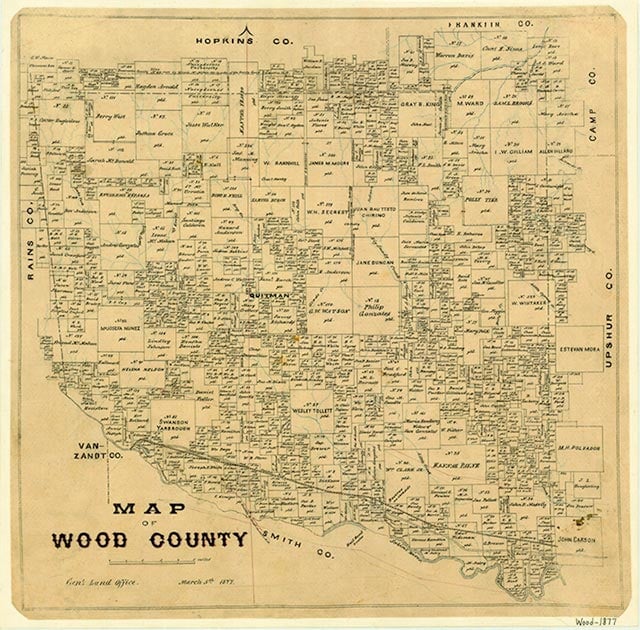Hainesville

Hainesville is at the intersection of Farm roads 49 and 778, seven miles southeast of Quitman in southeastern Wood County. There were settlers in the area as early as 1845, and several families were living in the vicinity during the 1860s. Around 1870 Christian H. Haines built a gristmill on Mill Race Creek. By 1893 the post office at nearby Dupree had been moved to the community and was called Hainesville, after Haines, whose family also owned a general store that was one of the first two businesses in the community. The other was the doctor's office of James Marion Puckett, who was said to have started the community of Hainesville by setting up his practice there. By 1896 the community of twenty-five was served by a blacksmith, a cotton gin, and three music teachers. A Methodist church probably hosted the community's first school, which in 1896 reported fifty-one students. A Baptist church was organized in 1897. The local economy was based on farming, and residents grew sugarcane, peanuts, melons, and peaches in addition to the staple of cotton. By 1905 the community's school system served eighty-four White and twenty-four Black students. In 1907 the post office closed. By the 1930s Hainesville reported a population of 200 and six businesses. At that time it had several churches and two schools, which in 1932 enrolled 178 White and twenty-six Black students. The population had fallen to fifty by 1949, and in the 1960s the schools were consolidated with those of Mineola and Quitman. By 1968 the population was seventy-four, at which level it was still reported in 2000. A 1988 map showed the community with two churches, a business, and a community or town hall. Reportedly, when excavations were being made around 1870 for the Haines mill, two miles south of Hainesville, ditchdiggers uncovered some twenty-five old rifles. A few years later the unmarked grave of a White man interred in a hewn-log coffin was dug up on the nearby Joe Moody farm. Area legends have it that the body was that of French explorer René Robert Cavelier, Sieur de La Salle, who in 1687 was killed somewhere in East Texas. A theory advanced in the 1950s suggested that the remains were actually those of a member of the Moscoso expedition. Because of the lack of conclusive evidence, both of these theories have been generally discounted. Also, further research suggested that the rifles in fact dated from the 1700s, rather than from the 1500s as had been previously theorized.
Rachel Jenkins | © TSHA

Adapted from the official Handbook of Texas, a state encyclopedia developed by Texas State Historical Association (TSHA). It is an authoritative source of trusted historical records.

- ✅ Adoption Status:
Belongs to
Hainesville is part of or belongs to the following places:
Currently Exists
Yes
Place type
Hainesville is classified as a Town
Associated Names
- (Dupree)
Location
Latitude: 32.71763200Longitude: -95.36439510
Has Post Office
No
Is Incorporated
No
Population Count, 2009
95
